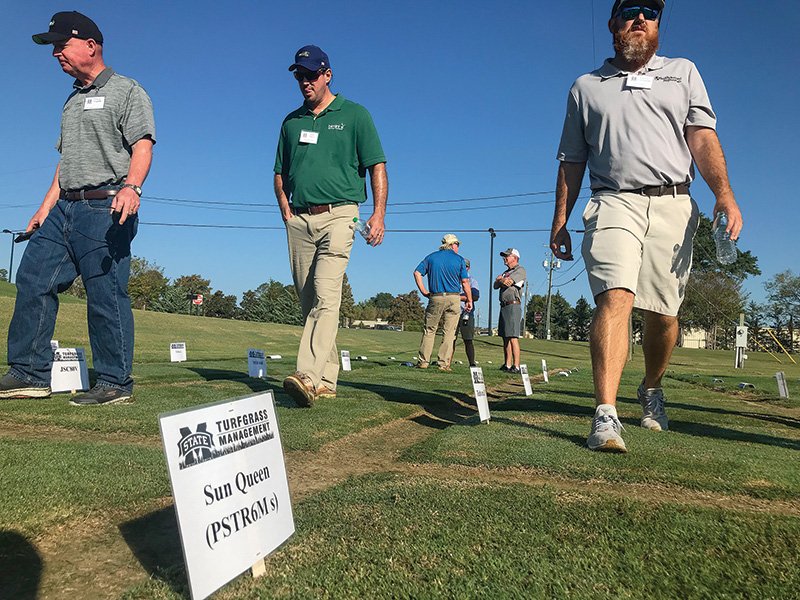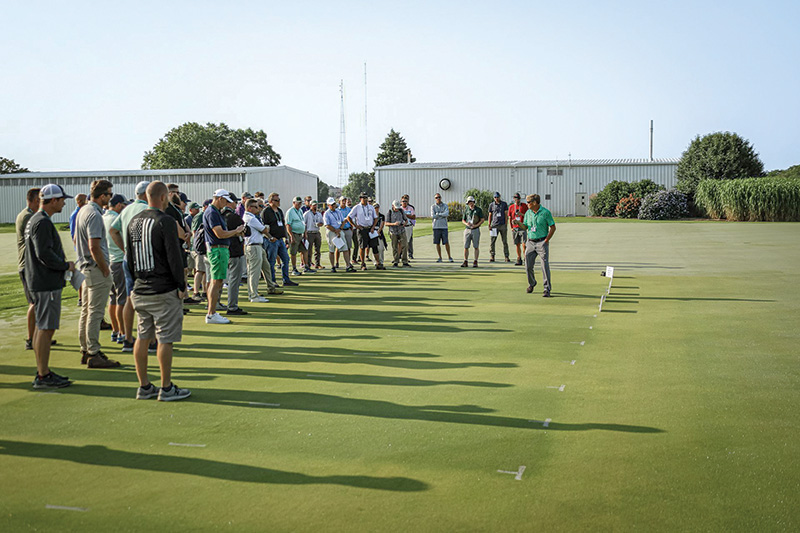
Participants in the Mississippi State University turfgrass field day check out trials in Starkville, Miss. Photos by Darrell J. Pehr
While it may not seem that Michigan and Mississippi are much alike, one area of common ground is a passion for turfgrass research.
I had a chance to hit the road and attend turfgrass research field days last summer at Michigan State University and Mississippi State University and found both presentations informative and well worth the trip.
Both universities enjoy impressive facilities. Mississippi State’s research area is housed at the R.R. Foil Plant Science Research Center in Starkville, while Michigan State research is conducted at the Robert Hancock Turfgrass Research Center in East Lansing. Both are on the outskirts of the university central campus, and both had signs of significant university support, including attendance by university administrators who spoke during each event.
One of the best parts of attending a field day is the opportunity to hear updates directly from the researchers themselves. Typically, they select their most impactful projects and provide details about how the ongoing research is progressing, or they may present an overview of completed research projects. These two field days provided those and more.
At Michigan State, golf-related projects included a look at putting green maintenance approaches in the past, present and what may come in the future; management of dollar spot and anthracnose; management strategies to prepare turf for overwintering; and an update on the WinterTurf project.
Another Michigan State project is looking at sustainable irrigation practices, with a comparison of capillary hydroponic systems (CHS) and variable-depth root zone (VDR) approaches. In 2022, Frontier Golf constructed a putting green research site at Michigan State that includes three CHS and three VDR greens. The $500,000 cost was funded by Capillary Flow (formerly Capillary Concrete). Researchers are performing replicated research on what they hypothesize are the two most water-efficient putting green construction methods in the most extreme application: undulating greens. They also plan to document best management practices for each construction method to assist superintendents who will manage such systems in the future.

Attendees at the Michigan State turfgrass research field day listen to a presentation from Thomas Nikolai, Ph.D., in East Lansing, Mich.
Not surprisingly, presentations at subtropical Mississippi State started off with a discussion of warm-season turfgrass breeding. Researchers also presented guidance on turfgrass weeds, turfgrass best management practices, insect pests and diseases that impact commercial turfgrass.
The Mississippi State research team also reported on progress of a renovation of their research green, which was established in 2007. The green had become contaminated with Zorro zoysiagrass that had been grown on the surround. Last spring, sod was removed from seven 50-foot-by-50-foot plots of the research green and surround. The surround was regraded to improve drainage, and Tifway bermudagrass sod was installed. On the green surface, 4 inches of material was removed and replaced by 5 inches of new material. Five of the plots received a greens mix of USGA sand and 10% reed-sedge peat. One of the plots received USGA sand and 13% CarbonizPN soil amendment from Mirimichi Green. The final plot received USGA sand with no amendments. Grow-in research experiments will be initiated thanks to support from sponsors.
So, whether it’s Michigan or Mississippi, a lot of research is happening, and more is getting underway.
If you haven’t had a chance to attend a field day, consider it. More than a dozen were scheduled last summer in areas across the U.S., so surely at least one will be near your area next year. Field days are a good chance to catch up on turfgrass research that applies to the region around the university sponsoring the event, so it’s an opportunity to get up-to-date, relevant updates on the latest research being conducted in your area that could be helpful in your daily work, and down the road.
Darrell J. Pehr is GCM’s science editor.